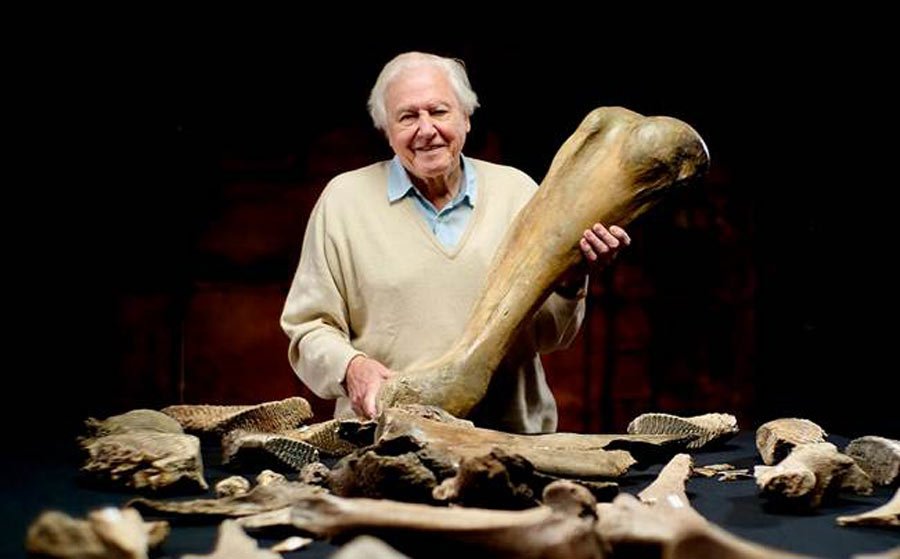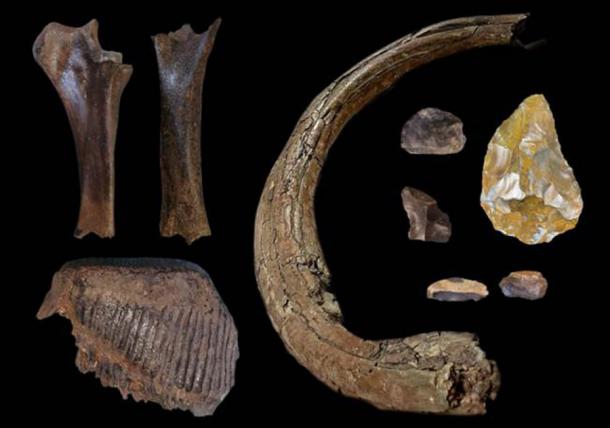Neanderthal Hand Axe Results in Steppe Mammoth Graveyard
Archaeologists have unearthed the skeletons of five prehistoric mammoths at a site ‘where cave-dwellers dined 215,000 years ago after finding a Neanderthal axe in a Cotswolds field. Experts discovered the remains of five of the animals – two adults, two juveniles and an infant – at a quarry near Swindon.
Digging at the site began after two keen fossil hunters, Sally and Neville Hollingworth, spotted a Neanderthal hand axe at the site. Experts from DigVentures then went on to find remains belonging to a species of Steppe mammoth, an ancestor of the Woolly mammoth.
Other discoveries at the site included delicate beetle wings and fragile freshwater snail shells as well as stone tools from the Neanderthal age.

The site will feature in Attenborough And The Mammoth Graveyard on BBC1 on December 30.
Sir David Attenborough will join Professor Ben Garrod and archaeologists from DigVentures to learn why the mammoths were there and how they died.
The discovery of the Neanderthal tools could mean the site was a ‘massive buffet’, according to experts.
Prof Garrod, of the University of East Anglia, said: ‘This is gold dust. It could be that Neanderthals were camping there, maybe they caused the deaths of these animals, chasing them into the mud and enjoying a massive buffet.’
‘Maybe they found them there already and got a free meal,’ he told the Telegraph.
‘If the lab shows the cut-marks are human-made, our site will be one of the oldest scientifically excavated sites with Neanderthals butchering mammoths in Britain.’
Steppe mammoths lived from approximately a 1.8million years ago to about 200,000 years ago. Lisa Westcott Wilkins, from DigVentures, said: ‘Finding mammoth bones is always extraordinary, but finding ones that are so old and well preserved, and in such close proximity to Neanderthal stone tools is exceptional.
‘Words can’t quite capture the thrill of seeing a mammoth tusk still in the ground or the feeling of standing in the middle of a site that has the potential to change how we see our closest human relatives and the Ice Age megafauna they shared their world with.’



Ms Hollingworth, of Swindon, told the BBC: ‘We were originally hoping to find marine fossils, and finding something so significant instead has been a real thrill.
‘Even better than that is seeing it turn into a major archaeological excavation
‘We couldn’t be more pleased that something we’ve discovered will be learned from and enjoyed by so many people.’
Research is ongoing to understand why so many mammoths were found in one place, and whether they were hunted or scavenged by Neanderthals.
Duncan Wilson, Chief Executive of Historic England, said: ‘This represents one of Britain’s most significant Ice Age discoveries in recent years.
‘The findings have enormous value for understanding the human occupation of Britain, and the delicate environmental evidence recovered will also help us understand it in the context of past climate change.’
DigVentures is a team of archaeologists who also organise archaeological digs that are open to members of the public to join.





